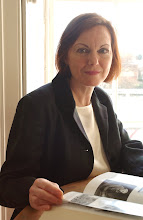
 Geoff Culshaw's ancestor, Thomas Hunt (c.1798-1879), was a doctor who lived and practised in Bloomsbury (photo above). He was born in Watford, Hertfordshire, where his father (also Thomas) was the Baptist minister. In 1812, Thomas received an apprenticeship grant of £80 from the John Bankes Trust of the Haberdashers' Company, and probably commenced his medical training. As a non-conformist, he would not have been eligible for a university place at Oxford or Cambridge so his route into medicine lay in becoming apprenticed to a surgeon and taking hospital courses in anatomy and surgery. At that time, surgeons acted more as 'general practitioners' in the community than as hospital-based doctors, treating skin diseases (including syphilis), performing minor surgery and amputations, and setting fractures. Physicians, on the other hand, were more likely to be university-educated and ranked higher in the medical heirarchy.
Geoff Culshaw's ancestor, Thomas Hunt (c.1798-1879), was a doctor who lived and practised in Bloomsbury (photo above). He was born in Watford, Hertfordshire, where his father (also Thomas) was the Baptist minister. In 1812, Thomas received an apprenticeship grant of £80 from the John Bankes Trust of the Haberdashers' Company, and probably commenced his medical training. As a non-conformist, he would not have been eligible for a university place at Oxford or Cambridge so his route into medicine lay in becoming apprenticed to a surgeon and taking hospital courses in anatomy and surgery. At that time, surgeons acted more as 'general practitioners' in the community than as hospital-based doctors, treating skin diseases (including syphilis), performing minor surgery and amputations, and setting fractures. Physicians, on the other hand, were more likely to be university-educated and ranked higher in the medical heirarchy.Thomas Hunt trained at at St Thomas's and at Guy's Hospital, London, and was admitted to the Royal College of Surgeons by examination in August 1820. In 1826 he lived at Upper Clapton, Middlesex, but by 1829, he was practising in Herne Bay, Kent. He returned to London some time before 1850, taking up residence at 26 Bedford Square, Bloomsbury (picture above). He practised as a dermatologist (skin specialist) and became a Fellow of the Royal College of Surgeons in 1852. He lectured on diseases of the skin at the College and was also consulting surgeon to the Western Dispensary for Diseases of the Skin, Great Portland Street. He served for a time as Vice-President of the Medical Society (the Medical Society of London, founded in 1773, is the oldest medical society in Britain: http://www.medsoclondon.org/) and was an active member of the Epidemiological Society (founded 1850: http://www.ph.ucla.edu/EPI/snow/LESociety.html). He was also Medical Officer of Health for the St Giles District of London. Thomas Hunt published a number of books and articles which are listed on Geoff's website: http://www.geoffsgenealogy.co.uk/hunt/huntdoc.htm
Thomas married Martha Mary Colam sometime between 1819-1925. She came from a properous family and was born in Charterhouse Street in the City of London. The marriage produced thirteen children (6 boys and 7 girls), of whom Thomas (probably their first son) also trained as a doctor and lived at his parent's residence, which by 1861 was 23 Albert Place, Bedford Square. He became a member of the Royal College of Surgeons in 1859.
The third son, William, born about 1839, was a medical student at the Middlesex Hospital, London, in 1861, but died the following year off the Cape of Good Hope, on his way to Sydney on board the Nourmahal.
Martha Mary died in 1861 and Thomas senior married Caroline Hall three years later.
Despite having a very large family, the Hunts lived very comfortably in Bloomsbury. At 26 Bedford Square the household included a cook, a housemaid and a page. Thomas was an exact contemporary of two other eminent medical residents of Bedford Square, both of whom lived at no 35 - Thomas Hodgkin (1798-1866), who first described Hodgkin's disease, and Thomas Wakley (1795-1862), founding editor of The Lancet. They also trained at St Thomas's and Guy's Hospitals. After the move to 23 Albert Place, the Hunt household no longer included a page but still employed a cook and housemaid.
Interestingly, only three of the Hunt children married, and produced only three offspring between them.


